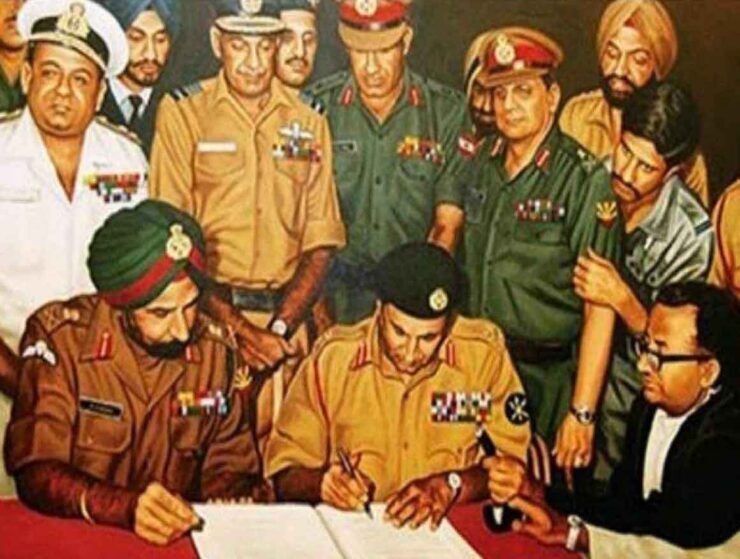
Pakistan can never forget the humiliation of December 16, 1971, when Indian forces entered Dhaka, the capital of East Pakistan, and enforced the unconditional surrender of the four-division strong Eastern Theatre Command of the Pak army. The historic capitulation, led by Lt General Amir Abdullah Khan Niazi, was accepted by the Indian Eastern Army Commander Lt General Jagjit Singh Aurora at the Dhaka Sports Stadium. Pakistan was dismembered and the whole world watched the birth of a new nation named Bangladesh by Mujibur Rahman, father of Sheikh Hasina, the current Prime Minister of that country.
India declared unilateral ceasefire at 16.31 hours on December 16, tearing an enemy nation into two halves, and thus washing the sins of the 1962 unilateral ceasefire announced by China. The seeds of war were sown in early 1971, when the Awami League secured absolute majority in general elections and sought autonomy for Bengali-dominated East Pakistan. General Yahya Khan, President of Pakistan, ordered a military crackdown and brutal repression on the people of East Pakistan. Sheikh Mujibur Rahman and other top leaders were arrested for treason. The Pak military resorted to mayhem through mass rapes and killings. As a result, nearly 10 million East Pakistanis fled to India as refugees, adversely affecting the Indian economy. India appealed to world leaders to force Pakistan to stop atrocities on the poor Bengali population but none responded.
Prime Minister Indira Gandhi was in favour of launching an attack at the earliest, but Army Chief General Sam Manekshaw advised her to delay it post the monsoons so that full preparations could be made and troops from various locations mobilised. She gave full freedom to the Army to plan the operation; meanwhile, a diplomatic offensive was launched to generate international opinion in favour of action by India. The Friendship Treaty with the then USSR was invoked to counter Pak-friendly USA and China at the UN. The war officially started on December 3 when the Pakistani Air Force launched simultaneous strikes on 11 Indian airbases. India responded with full might and in a 13-day blitzkrieg on the Eastern Front and Western Front, demolished Pak defences by capturing 15,000 sq km of enemy territory. As many as 93,000 Pakistani soldiers were taken Prisoners of War, 9,000 troops killed and 25,000 wounded. Nearly 2,500 Indian troops also made the supreme sacrifice. About 3 million Bangladeshi civilians were killed and 2 lakh women were raped by Pak soldiers /supporting militia during the 9-month-long crackdown.
Overall, it was a glorious victory for the Indian Armed Forces. They fought unitedly and professionally. It was the largest surrender taken by any army after World War ll and the largest tank battles fought. The Indian Army created a new nation in a short and swift 13-day war, an unparalleled feat in world military history.
Valour Sagas of 1971 War: The action during Bangladesh War of 1971 saw four bravehearts honoured with the Param Vir Chakra (PVC), the highest gallantry award. Heroes are many, known and unsung. Lest we forget, we salute them all. Let us remember the bravehearts who became legends:
Lance Naik Albert Ekka (14 Guards), PVC (Posthumous)
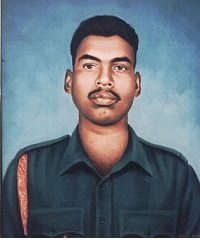 Albert Ekka was born on December 27, 1942 at Zari village of Ranchi district in Jharkhand. He belonged to a Tribal family. His father Julius Ekka was a farmer and mother Mariam Ekka a homemaker. An excellent archer, he was enrolled in Bihar Regiment on December 27, 1962 at the age of just 20 years. In 1968, he was posted to 14 Guards Battalion. He got married to Balamdine Ekka in 1971 just before the war. On December 3, the very first day of the 1971 War, the 14 Guards were detailed to capture Pakistan’s strong point at Hilli near Gangasagar, 6.5 km west of Agartala (Tripura) in the eastern sector. It was a well-fortified advance position at Hilli and for the capture of Akhura, neutralisation of this location was necessary.
Albert Ekka was born on December 27, 1942 at Zari village of Ranchi district in Jharkhand. He belonged to a Tribal family. His father Julius Ekka was a farmer and mother Mariam Ekka a homemaker. An excellent archer, he was enrolled in Bihar Regiment on December 27, 1962 at the age of just 20 years. In 1968, he was posted to 14 Guards Battalion. He got married to Balamdine Ekka in 1971 just before the war. On December 3, the very first day of the 1971 War, the 14 Guards were detailed to capture Pakistan’s strong point at Hilli near Gangasagar, 6.5 km west of Agartala (Tripura) in the eastern sector. It was a well-fortified advance position at Hilli and for the capture of Akhura, neutralisation of this location was necessary.
The 14 Guards was advancing towards the Akhura axis on December 6 when the enemy opened fire with Medium Machine Guns (MMG) and mortars on leading A Company. Another Light Machine Gun firing was also causing a lot of casualties on Albert Ekka’s section from the flank. The attack was launched on the fortified position. Close hand-to-hand fighting took place but the LMG continued firing. Albert crawled to the LMG bunker and bayoneted the two enemy soldiers and silenced the weapon. He suffered a lot of bullet injuries during the assault and close combat. The company was on the objective but an MMG opened up from a double storey fortification in the deep. All attempts failed to silence the MMG that was taking a heavy toll of troops and halted the advance. Albert Ekka, despite being severely injured, volunteered to crawl to the rear and climb up. Under the cover of a smoke screen, he crawled to the rear, climbed up and lobbed grenades and killed the MMG crew. Soon after, he collapsed due to excessive bleeding. The MMG post was silenced and the Battalion managed to capture Akhura due to the supreme sacrifice of Lance Naik Albert Ekka, who displayed the most conspicuous bravery and resolute determination in the face of the enemy. He was awarded the Param Vir Chakra posthumously.
Major Hoshiar Singh (3 Grenadiers), PVC
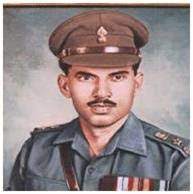 Major Hoshiar Singh was born in Sisana village, in Haryana’s Sonipat district, to Choudhary Hira Singh Dahiya. After his schooling, he studied at the Jat College, Rohtak. He was a state-level basketball player and physically very tough. He was married to Dhano Devi. He was initially enrolled in 2 JAT and was commissioned in the 3 Grenadiers Regiment on June 30, 1963 and was promoted as Lieutenant on June 30, 1965. His first posting was in NEFA. In the 1965 Indo-Pakistan war, he saw some action in the Rajasthan sector, for which he was mentioned in despatches. He was promoted to Captain on June 30, 1969.
Major Hoshiar Singh was born in Sisana village, in Haryana’s Sonipat district, to Choudhary Hira Singh Dahiya. After his schooling, he studied at the Jat College, Rohtak. He was a state-level basketball player and physically very tough. He was married to Dhano Devi. He was initially enrolled in 2 JAT and was commissioned in the 3 Grenadiers Regiment on June 30, 1963 and was promoted as Lieutenant on June 30, 1965. His first posting was in NEFA. In the 1965 Indo-Pakistan war, he saw some action in the Rajasthan sector, for which he was mentioned in despatches. He was promoted to Captain on June 30, 1969.
On December 15, 1971, a battalion of the Grenadiers was given the task of establishing a bridgehead across the Basantar River in the Shakargarh Sector. Major Hoshiar Singh was commanding the left forward company and was ordered to capture the enemy locality of Jarpal. This was a well-fortified position and was held in strength by the enemy. During the assault, his company came under intense shelling and effective crossfire from enemy MMGs. Undeterred, he led the charge and captured the objective after a fierce hand-to-hand fight. The enemy reacted and put in three counter-attacks on December 16, 1971, two of them supported by armour. Major Hoshiar Singh, unmindful of the heavy shelling and tank fire, went from trench to trench, motivating his command and encouraging his men to stand fast and fight. Inspired by his courage and dauntless leadership, his company repulsed all the attacks inflicting heavy casualties on the enemy. Again, on December 17, 1971 the enemy made another attack with a battalion supported by heavy artillery fire. Though seriously wounded by enemy shelling, Major Hoshiar Singh again went from trench to trench moving about in the open with utter disregard to his personal safety when an enemy shell landed near the Medium Machine Gun post injuring the crew and rendering it inoperative. Major Hoshiar Singh, realising the importance of machine-gun fire, immediately rushed to the machine-gun pit and though seriously wounded himself, manned the gun inflicting heavy casualties on the enemy. The attack was successfully repulsed and the enemy retreated leaving behind 85 dead including their Commanding Officer and three other officers. Though seriously wounded, Major Hoshiar Singh refused to be evacuated till the ceasefire.
Throughout this operation, Major Hoshiar Singh displayed most conspicuous gallantry, indomitable fighting spirit and leadership in the highest traditions of the Army and was awarded the Param Vir Chakra.
Flying Officer Nirmal Jit Singh Sekhon (IAF), PVC (Posthumous)
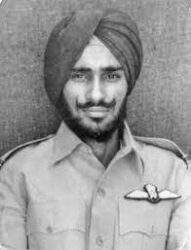 Nirmal Jit Singh Sekhon was born on July 17, 1943 in Isewal village of Ludhiana. He was the son of M.W.O. (Honorary) Flight Lieutenant Tarlok Singh Sekhon. He was commissioned into the Indian Air Force on June 4, 1967 as a Pilot Officer. He was posthumously awarded the Param Vir Chakra, India’s highest military decoration during war time, in recognition of his lone defence of Srinagar Air Base against a PAF air raid during the India-Pakistan War of 1971. He is the only member of the Indian Air Force to be honoured with the Param Vir Chakra till date.
Nirmal Jit Singh Sekhon was born on July 17, 1943 in Isewal village of Ludhiana. He was the son of M.W.O. (Honorary) Flight Lieutenant Tarlok Singh Sekhon. He was commissioned into the Indian Air Force on June 4, 1967 as a Pilot Officer. He was posthumously awarded the Param Vir Chakra, India’s highest military decoration during war time, in recognition of his lone defence of Srinagar Air Base against a PAF air raid during the India-Pakistan War of 1971. He is the only member of the Indian Air Force to be honoured with the Param Vir Chakra till date.
During the Indo-Pak War of 1971, he was serving with the No. 18 Squadron, “The Flying Bullets” of the IAF, now re-raised with Tejas, flying the Folland Gnat fighter aircraft based at Srinagar. On December 14, 1971, Srinagar airfield was attacked by six Pakistan Air Force F-86 jets of the 26 Sqn from PAF base Peshawar. Flying Officer Sekhon was on operational readiness platform duty at that time. As soon as the first aircraft attacked, Sekhon rolled for take-off in a two-Gnat formation, with Flt Lt Ghumman in the lead, just as the first bombs were falling on the runway. While delayed due to dust kicked up by the preceding Gnat, Sekhon lost no time in singling out the first Pak Sabre pair that was re-forming after the bombing run. The Gnat Leader, Flt Lt Ghumman, lost visual contact with his wingman just after take-off, remained out of the fight leaving Sekhon to handle the muddle all by himself. In the ensuing air battle, Sekhon scored a direct hit on one Sabre and set another ablaze. The latter was seen heading away towards Rajouri, trailing smoke.
Sekhon, after being hit, was advised to return to the base. He is said to have flown in straight, wings level for some time, then going inverted, plummeting down, probably due to the failure of the control system. He attempted a last-minute ejection, which did not prove successful, as his canopy was seen to fly off. The wreckage of the Gnat was found in a gorge, near the road coming from Srinagar town to the base, a few miles from the base. Despite many search efforts by the Army and Air Force, his remains were never found due to the mountainous terrain of where this fighter went down, much to the disappointment of his wife and family. He is truly remembered as the saviour of Srinagar.
Second Lieutenant Arun Khetarpal (17 Poona Horse) PVC (Posthumous)
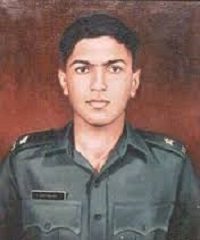 >Arun Khetarpal was born in Pune, Maharashtra, on October 14, 1950. His family belonged to Sargodha, Pakistan, and had migrated to India after Partition as refugees. His father Lt Col (later Brigadier) ML Khetarpal was a Corps of Engineers officer serving in the Indian Army and his family traced a long history of military service. Attending The Lawrence School, Sanawar, he distinguished himself both as an able student and sportsman and was the school prefect. Khetarpal joined the National Defence Academy in June 1967. He belonged to Foxtrot Squadron where he was the Squadron Cadet Captain of the 38th Course. He subsequently went on to join the Indian Military Academy. In June 1971, Khetarpal was commissioned into the 17 Poona Horse.
>Arun Khetarpal was born in Pune, Maharashtra, on October 14, 1950. His family belonged to Sargodha, Pakistan, and had migrated to India after Partition as refugees. His father Lt Col (later Brigadier) ML Khetarpal was a Corps of Engineers officer serving in the Indian Army and his family traced a long history of military service. Attending The Lawrence School, Sanawar, he distinguished himself both as an able student and sportsman and was the school prefect. Khetarpal joined the National Defence Academy in June 1967. He belonged to Foxtrot Squadron where he was the Squadron Cadet Captain of the 38th Course. He subsequently went on to join the Indian Military Academy. In June 1971, Khetarpal was commissioned into the 17 Poona Horse.
On December 16, 1971, the Squadron Commander of Poona Horse ‘B’ Squadron radioed for reinforcement as the Pakistani Armour that was superior in strength had counter-attacked at Jarpal in the Shakargarh Sector. After hearing this transmission, Second Lieutenant Arun Khetarpal, who was in ‘A’ Squadron, voluntarily moved with his troops to assist ‘B’ Squadron. En route, while crossing the Basantar River, Khetarpal and his troops came under fire from enemy strong points and RCL gun nests that were still holding out. Time was running out and as a critical situation was developing in the ‘B’ Squadron sector, Khetarpal boldly started attacking the enemy strong points by literally charging them, overrunning their defence with his tanks and capturing the enemy infantry and weapon crew at pistol point. One tank commander of his troop was killed. But Khetarpal continued to attack relentlessly until all enemy opposition was overcome and he broke through towards the ‘B’ Squadron position, just in time to see the enemy tanks pulling back after their initial probing attack on this squadron.
He was so carried away by the wild enthusiasm of battle and the impetus of his own headlong dash that he started chasing the withdrawing tanks and even managed to shoot and destroy one. Soon thereafter, the enemy regrouped with a squadron of armour for a second attack and this time they selected the sector held by Second Lieutenant Khetarpal and two other tanks as the points for their main effort. A fierce tank fight ensued in which 10 enemy tanks were hit and destroyed, and Khetarpal too was severely wounded. He was asked to abandon his tank but he realised that the enemy though badly decimated was continuing to advance in his sector of responsibility and if he abandoned his tank the enemy would break through. He fought on gallantly and destroyed another enemy tank. At this stage, his tank received a second direct hit, which resulted in the death of this gallant officer.
Second Lieutenant Arun Khetarpal was dead, but by his intrepid valour he had saved the day; the enemy was denied the breakthrough it was so desperately seeking. Not one enemy tank got through. Khetarpal had shown the best qualities of leadership, tenacity of purpose and the will to close in with the enemy. For this act of courage and self-sacrifice far beyond the call of duty, he was awarded the Param Vir Chakra.
Major Kuldeep Singh Chandpuri (23 Punjab), Mahavir Chakra
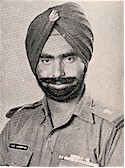 The brave officer was commanding ‘A’ Company of 23 Punjab at Longewala Post in Ramgarh Sector, in Rajasthan’s Jaisalmer district. He was born on November 22, 1940 at Montogomery, West Punjab, now in Pakistan. After Partition, the family moved to Chandpur Rurki village in Balachour, Punjab. He graduated from Government College, Hoshiarpur, in 1962. He was a third generation Army officer. He was commissioned from OTA Chennai, in 3 Punjab. He took part in the Indo-Pak War of 1965 and before the 1971 war he was promoted and posted to the newly raised 23 Punjab. He finally retired as Brigadier and left for his heavenly abode in 2018. A statue was unveiled at Longewala on December 5, 2021 by his wife.
The brave officer was commanding ‘A’ Company of 23 Punjab at Longewala Post in Ramgarh Sector, in Rajasthan’s Jaisalmer district. He was born on November 22, 1940 at Montogomery, West Punjab, now in Pakistan. After Partition, the family moved to Chandpur Rurki village in Balachour, Punjab. He graduated from Government College, Hoshiarpur, in 1962. He was a third generation Army officer. He was commissioned from OTA Chennai, in 3 Punjab. He took part in the Indo-Pak War of 1965 and before the 1971 war he was promoted and posted to the newly raised 23 Punjab. He finally retired as Brigadier and left for his heavenly abode in 2018. A statue was unveiled at Longewala on December 5, 2021 by his wife.
The 23 Punjab was deployed at Tanot, Sadewala, Ghutaru axis on Dec 3, 1971. Battalion Headquarters was located at Sadewala and Major Kuldeep Singh was holding company locality at Longewala sand dune. On December 4-5 night, Pakistan’s two Infantry Brigades, 51 lnfantry Brigade supported by 22 Cavalry equipped with latest T59 tanks, was to head for Ramgarh bypassing Longewala, and 206 Brigade with 38 Cavalry was to isolate Longewala from three sides. The post was initially attacked with heavy Artillery fire and later by tank fire and infantry weapons. Major Kuldeep Singh repulsed three attacks. He had only 120 soldiers and two RCLs 106 mm guns, which knocked down two tanks. The Pak offensive with two Brigades with almost 4,000 troops and two armoured regiments was stalled. At dawn Hunters of the IAF saved the day. Throughout the night he inspired his soldiers, blunted enemy infantry and armour attacks and forced them to retreat. For his gallant leadership and resolute determination, he was awarded the Mahavir Chakra. He deserved the Param Vir Chakra. He is known as the saviour of Jaisalmer.
We are proud of our true heroes of the Indian Armed forces, who never hesitate to make supreme sacrifices beyond the call of duty and for the integrity of mother India. Writing about the 1971 Indo-Pak war, Sydney Schanberg of the New York Times wrote: “l do not like sitting around praising armies, but this Indian Army was something, they were great all the way… never saw any man flinch, there was a tremendous spirit in Indian soldiers and it did good to experience it… they were brave but perfect gentlemen.”
-The writer is an Indian Army veteran and a defence analyst. He has keen interest in Geo-strategic affairs and writes regularly on internal and external affairs issues related to India and neighbours. The views expressed are personal and do not necessarily reflect the views of Raksha Anirveda.









